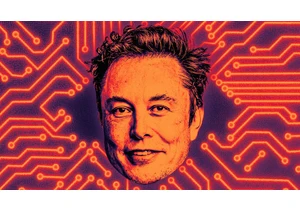Semiconductors are to the 21st century what petroleum was to the 20th: essential to economic growth, military power, and a modern, connected society. The U.S. invented semiconductors but today produces only 12% of the world’s supply.
Recent shortages and supply chain interruptions have proven the risk of relying on foreign production (where the U.S. is not always the first customer in line) while rising geopolitical tensions have made semiconductor supply an urgent priority for national security. The $52.7 billion CHIPS and Science Act aims to address this issue by supercharging U.S.-based semiconductor manufacturing.
Money can be appropriated, but skilled workers cannot. According to Lightcast analysis, doubling U.S. chip manufacturing capabilities, as advocates for the legislation aim to do, would require more than 230,000 new semiconductor workers. While some of these workers will fill the administrative and support roles any business needs, most will need highly specialized skills. For example, there will be a critical need for computer hardware engineers, industrial engineering technologists, and production workers who know how to work in dust-free “clean rooms.”
The challenge for the semiconductor industry, like many others, is the lack of skilled workers. Unemployment has been hovering between 3.5% and 3.7% for months. Meanwhile, the American population is aging rapidly and more baby boomers are entering their retirement years.
So where will the next generation of U.S. semiconductor workers come from?
We can and must expand our pipeline of science, technology, engineering, and math (STEM) education and training. But this won’t be enough. We must also tap into the pool of American workers who already have some, if not all, of the skills needed to make semiconductors.
“Skill adjacency,” as this approach is known, holds the key to unlocking broader pools of talent. By thinking of jobs in terms of the individual skills they require and understanding how the skills demanded in different jobs overlap, we can identify the quickest, easiest paths to bringing workers into semiconductor roles.
For example, if we double semiconductor production in the U.S., Lightcast research shows we will need to increase the number of electrical and electronic engineering technologists and technicians working in the semiconductor industry by nearly 50%, which amounts to 6,300 new positions.
But a different occupation, industrial machinery mechanics, has a similar skill profile and more than 370,000 currently employed workers in the U.S. With a few additional skills, such as low-voltage wiring, working with printed circuit boards, and other electrical engineering abilities, these workers can step into the sought-after semiconductor roles.
Focusing on skill adjacency offers workers a step up on the career ladder while allowing manufacturers to avail themselves of a broader talent pool much faster and at lower cost. It is less expensive to teach someone a few additional skills than to train them from scratch.
This can also be an effective strategy to achieve another goal of the CHIPS legislation: bringing opportunity and mobility to communities that might otherwise be left behind. Assessing the skills available in different communities and identifying gaps that need closing can allow companies to site factories near available pools of labor.
Likewise, skills adjacency may be able to help solve a long-running problem in STEM fields: diversity. For example, about 32% of those who fall into the “inspectors, testers, sorters, and weighers” job category are people of color. But this role shares a number of skills with packing and filling machine operators. By training packing operators in process improvement and ISO 9000 methodology, they can become inspectors—and employers can tap into a talent pool that is 62% people of color.
An economic strategy as ambitious as the CHIPS Act also needs a talent strategy. The days when businesses and governments could create jobs and feel confident that the workers would show up are behind us. The fact is that if America is going to build more semiconductors, it will also need to build more semiconductor workers.
Chris Kibarian is the CEO of Lightcast, a KKR portfolio company that provides labor market data, software, and advisory services to corporations, government agencies, and educational institutions. Ken Mehlman is co-head of the impact investment strategy at the global investment firm KKR, and the former chair of the Republican National Committee.
Melden Sie sich an, um einen Kommentar hinzuzufügen
Andere Beiträge in dieser Gruppe

As Elon Musk announced plans over the Fourth of July weekend to establish a third political party,

Dolores Ballesteros, a Mexico-based mother of two, was getting desperate. Her 6-year-old son kept hitting his brother, age 3, and seemed angry at her all the time. No matter what she did, she coul

Rarely has Silicon Valley experienced a more profound period of transformation than it has in the past handful of years. The big VC boom of 2020–2021. The great VC hangover starting in 2022. The g

A YouTube executive needed only 27 minutes to make the case that the company is taking over all aspects of how people create and consume video online.
That was the length of a recent tal

Every time I read about another advance in AI technology, I feel like another figment

Racist AI-generated videos are going viral on

Scientists are tracking a large gas planet experiencing quite a quandary as it orbits extremely close to a young star – a predicament never previously observed.
This exoplanet, as
